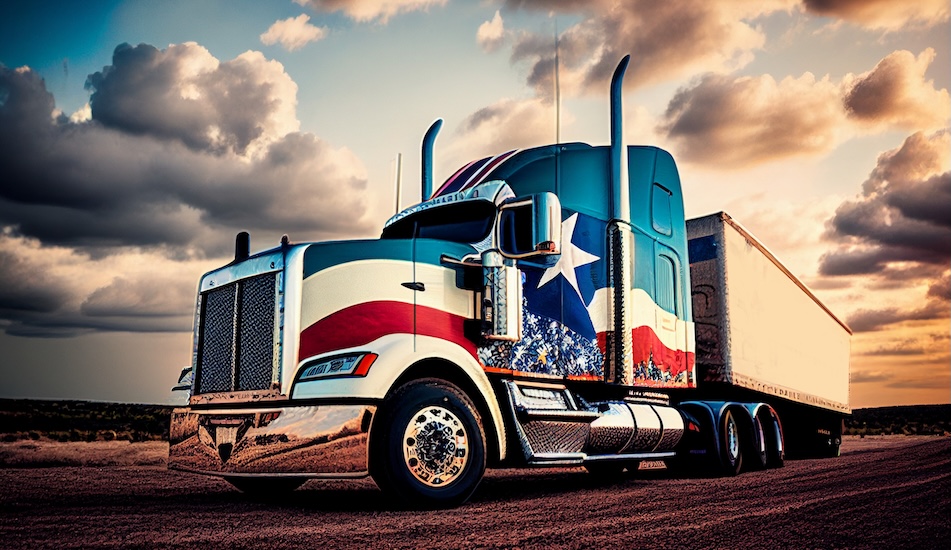Intrastate vs Interstate Moving: What Are the Key Differences?

Moving isn’t always easy because of the logistics. There are regulations and guidelines to note, especially if you plan to cross state lines and travel the interstate highway system.
In general, there are three types of moving: local, interstate, and intrastate move. But today, we’ll discuss the difference between interstate and intrastate moving. This will help you know what you should expect.
Intrastate and Interstate Moving: Definitions and Distinctions

Many people confuse the difference between interstate and intrastate moving. In general, both involve a relocation from one place to another.
The major difference is that an intrastate move is moving within the same state. An interstate move, on the other hand, refers to a move that requires crossing state lines.
Defining Intrastate Moving
An intrastate move is a relocation that starts and ends in the same state. It can cover a wide range of distances, which can span longer than 50 miles — but as long as it stays within the state lines, it’s still considered intrastate moving. California and Texas. for instance, cover a long state line.
Hiring a moving company for your intrastate move is the safest and most reliable way to get your belongings from one place to another.
What is Interstate Moving? Definition and Meaning
Understanding Interstate Moving Terms and Concepts
Interstate moving involves transporting household goods across state lines, but there are several important concepts to understand. The term “interstate” specifically refers to any move that crosses state boundaries, regardless of the distance. For example, moving from New York to New Jersey is considered interstate even though it might be a shorter distance than moving within California.
The legal framework for interstate moving is governed by federal regulations, specifically through the Federal Motor Carrier Safety Administration (FMCSA). This means that moving companies must maintain specific licenses, insurance levels, and operating authorities to perform interstate moves. Understanding these requirements helps ensure you’re working with a legitimate moving company.
One common misconception is that interstate moving always involves long distances. However, the defining factor is not distance but whether state lines are crossed. This distinction is crucial because it affects everything from licensing requirements to insurance coverage and cost structures.
Key Interstate Moving Terms
When planning an interstate move, you’ll encounter several important terms:
– Bill of Lading: This is your contract with the moving company and serves as your receipt for your belongings.
– Valuation: The declared value of your items that determines insurance coverage.
– USDOT Number: A unique identifier assigned to moving companies authorized for interstate operations.
Interstate Moving Requirements
Interstate moves require specific documentation and compliance:
– Written estimates must be provided
– Inventory lists are mandatory
– Carrier must provide a copy of “Your Rights and Responsibilities When You Move”
– Specific insurance requirements must be met
Understanding these terms and requirements helps ensure a smooth interstate moving process and protects your rights as a consumer.
Key Differences between Intrastate and Interstate Moves
There are three main key differences between interstate and intrastate moving.
- Where they travel
- What regulations they comply with
- The price of the travel fee or part-time labor
As we’ve said earlier, an intrastate move occurs within the same state, unlike an interstate move which involves a cross-country move. In terms of regulations, intrastate movers must comply with the United States Department of Transportation of their respective states. Plus, they should also have a DOT number for tracking.
The same cannot be said for interstate moving companies, which require you to comply with the United States Federal Motor Carrier Safety Administration.
Intrastate vs Interstate Moving: Regulations and Processes
Keeping your items safe is always the priority in interstate and intrastate moving. One of the best ways to do this is by enlisting the services of a legally compliant moving company.
1. Federal Regulations for Interstate Moves
Interstate movers must comply with the regulations of the state borders they enter. They are also regulated by the Federal Motor Carrier Safety Administration, which prescribes rules. These rules aim to prevent accidents and fatalities that could affect interstate movers.
More importantly, every interstate mover must have an issued USDOT number. The number proves they’re licensed to conduct an interstate move.
2. State Regulations for Intrastate Moves
On the other hand, intrastate moving companies must comply with regulations set forth by the Department of Transportation in each state.
They should also have a USDOT number and a state-issued MC number. An MC number is given to intrastate movers to help identify them. However, keep in mind that there may be some companies out there that would give out a fake MC number.
3. Process of Hiring a Moving Company for Intrastate Moves
Getting a referral is the best way to look for intrastate moving companies.
We also recommend asking for a free quote and watching out for any red flags. Here’s an example of some of those red flags:
- Overcharging rates
- Asking for deposits beforehand
- Getting a breakdown of their expenses like increased fuel charge
More importantly, intrastate movers need to be licensed to operate and insured.
4. Process of Hiring a Moving Company for Interstate Moves
Interstate moves require a great deal of planning and preparation. Looking for a reputable interstate moving company should be at the top of your list. Remember, a cross-country move is not easy and takes a lot of logistics. As such, choose a professional interstate moving company to do the job.
For a stress-free experience, ask for the transit details of your mover. This should help you monitor them from one point to another.
Also, always make sure they have a USDOT number and are compliant with the Federal Motor Carrier Safety Administration. These two are the main pillars of what makes a reliable interstate moving company.
Cost Considerations: Comparing Intrastate and Interstate Moves
Intrastate and interstate moves can cost you a lot of money. This is especially true if the intrastate movers travel a long distance. We’ve listed some factors you need to note to prepare you for the costs. This will help you save a few extra dollars and prioritize what to bring.
Factors Affecting Cost of Intrastate Moves
Moving companies for intrastate moves typically charge a flat or hourly rate. A flat rate is generally better because you already know the upfront cost. You don’t have to worry about the distance the moving company has to travel — regardless if it’s for short-distance moves or one that can span as long as 60 miles.
However, a flat rate can also get expensive, especially if you plan to take many things with you. That’s because local movers will weigh your whole shipment and generate the proper rate accordingly. So, if you’re taking all your furniture, it might be cheaper to buy brand-new pieces than transporting what you own.
Other professional movers charge an hourly rate regardless of the shipment’s weight. This is a great option for short-distance moves. Unfortunately, the cost could increase, especially if the move requires a longer distance.
Take the case of San Diego to San Francisco, which spans more than 500 miles. A long-distance move such as this can take at least 8 hours of traveling, which can be expensive. Weigh your options by considering your travel time and the weight of things you want to bring.
Factors Affecting Cost of Interstate Moves
Interstate movers typically charge a flat rate. The cost varies depending on the following factors:
- Weight of the shipment
- Total distance traveled
- Additional services required
In general, interstate moving costs a lot of money, considering the distance the movers have to travel. Moving companies have to consider labor costs, travel fees, and more. That being said, we highly recommend prioritizing the items you want to bring with you. This helps save money and allocate your budget for something else.
Cost Comparison and Budgeting Tips
Both interstate and intrastate moves can be costly. But between the two, interstate moving companies typically charge more. After all, they’ll have to go through different states and consider the extra expenses they face.
One of the best tips we recommend is choosing which items to bring to your move. Some movers base their costs on the shipment’s weight. The heavier it is, the more expensive your mover will charge you. That said, prioritize the items that matter the most.
Planning and Preparing for an Intrastate or Interstate Move
Planning and preparing for an interstate or intrastate move is often tricky since there are many things to consider. We’ve listed some helpful tips to help you start your move.
Creating a Moving Plan
Whether you’re moving within the same state or have to cross state lines, you always need a plan. A great way to start is by choosing which items you plan to bring. Remember, the fewer items, the better!
Next, you can start selecting the best moving companies for your relocation. Ask for a quote based on the weight of your shipment. Make sure to check for any hidden fees, like gas and toll.
Finally, always create a plan for your move-in day. What do you plan to do once all your items have been delivered to the new relocation area? Preparing for this saves you trouble and headache later on.
Packing Tips for Intrastate and Interstate Moves
Packing is never easy, especially if trying to cross state lines. The tendency is always to try to bring as much as possible, but this is one expensive mistake. Even before you enlist the services of moving companies, start by identifying the non-negotiable items you need to bring.
A good example could be your equipment, such as a personal computer or photocopy machine. You can also include some furniture, like your dining set or couch.
Preparing for Move-in Day: What to Expect
Move-in day is usually the most chaotic. With all your things right in front of your doorstep, you’ll have to figure out where to put all of them.
One way to overcome this is by giving clear directions to your local movers. Let them know which items go to which room in your apartment. This saves you the trouble of lugging your furniture across rooms.
Make sure to also have an inventory of what your movers packed in their trucks. This will help you check if there are any missing items.
Intrastate and Interstate Moving: Risks and Insurance
There are always some risks involved in short and long-distance moves. Knowing what these are helps you mitigate the risks.
Common Risks Associated with Moving
One of the common risks is always losing your things when you move. You could have left something in your old place, or your mover lost it altogether. To prevent this from happening, have a checklist of all the items you and your movers can go through.
Another risk is if the truck carrying your items ends up in an accident. Your belongings can get damaged or even lost.
Insurance Options for Intrastate and Interstate Moves
The moving industry assumes a lot of risks, especially with the amount of distance they travel. They have to go from one state to another and face some risks on the road. One way to mitigate this is with the help of insurance. Interstate and intrastate moves should be insured. Always ask your movers what their coverage is. This can help you decide whether you still need third-party insurance.
Protecting Your Belongings During a Move
The best way to protect your belongings is with the help of insurance. You can enlist the services of third-party insurance companies that can cover the entire cost of your belongings. This is important for people transporting valuable equipment or investment pieces.
Frequently Asked Questions
Before we leave with our parting words, we’ll answer some of the FAQs we always get about interstate and intrastate moves. This should help you understand the moving industry and what type of movers to enlist.
What exactly does moving interstate mean?
Moving interstate means relocating your household goods across state lines, regardless of the distance involved. This type of move is regulated by federal laws and requires movers to have specific licenses and insurance, unlike intrastate moves that stay within state boundaries.
Is There a Minimum Distance Requirement for Intrastate and Interstate Moves?
There’s no minimum distance for an intrastate and interstate move. As we’ve said earlier, an intrastate move can exceed 50 miles within the same state. But if the move is only between 50 miles, it won’t be considered an intrastate move but a local move.
Are There Any Special Permits Needed for Interstate Moves?
Interstate movers must always obtain a Federal Motor Carrier Safety Administration permit. They should also have a USDOT number, no matter which country or city they travel to.
How Can I Find a Trustworthy Moving Company for an Intrastate or Interstate Move?
One of the best ways to find a company for your intrastate and interstate move is through word of mouth. You could always ask for recommendations from your friends and family, who had first-hand experience with interstate and intrastate moves.
There are also several reliable movers out there that can help with your relocation. They can conveniently transport your things from one point to another. Choosing among the top listed companies will also be a great starting point. You don’t have to worry about the extra hassle once you reach your new state.
What Items Are Prohibited From Being Transported During Intrastate or Interstate Moves?
There are several items you can’t bring in interstate and intrastate moves. These items include the following:
- Dangerous items – gasoline, matches, propane, and fireworks
- Food – it could perish during the relocation
- Irreplaceable and valuable documents – they could get lost during transit
It would also be a good idea to check the list of items your interstate and intrastate movers prohibit from being transported. This helps protect your things and even saves on unnecessary costs.
How Do I File a Claim for Damages or Loss During an Intrastate or Interstate Move?
Call the moving company whose services you signed up for immediately. Tell them about the damage and that you plan to file a claim. Note that the process varies depending on whether it’s an interstate or intrastate move.
For intrastate moves, you can generally file a claim for up to 9 months. Interstate moves, on the other hand, need to be filed within a few months. Always check on the terms of your insurance so you can get the most out of it.
Conclusion
Moving to a new city is always hard. The last thing you want to happen is to lose all your things during the relocation. As such, knowing the difference between interstate and intrastate moving is crucial. It helps prepare you for the big move, especially for larger states. You can prepare for the cost even before your relocation takes place.
Stick with reliable movers with a state license or a USDOT number. The next time you plan to live in a new city, check back on the difference between interstate and intrastate moving!
Related Articles
Where to Move from Texas: Top 10 States for Ex-Texans in 2025

Where to Move from Texas: Top 10 States for Ex-Texans in 2025 Record numbers of Texans are exploring life beyond state lines, driven by soaring housing costs, evolving career landscapes, and the search for new lifestyle opportunities. The decision to leave Texas stirs intense emotions – after all, the Lone Star State‘s unique culture and […]
Read MoreHow to Move a House from One Location to Another: Planning to Completion

Relocating an entire house might seem like something out of a movie, but this remarkable feat of engineering happens more often than you’d think. From preserving historic mansions to saving beloved family homes from coastal erosion, house moving represents the intersection of cutting-edge engineering and practical problem-solving. With project costs typically ranging from $18,000 to […]
Read More




